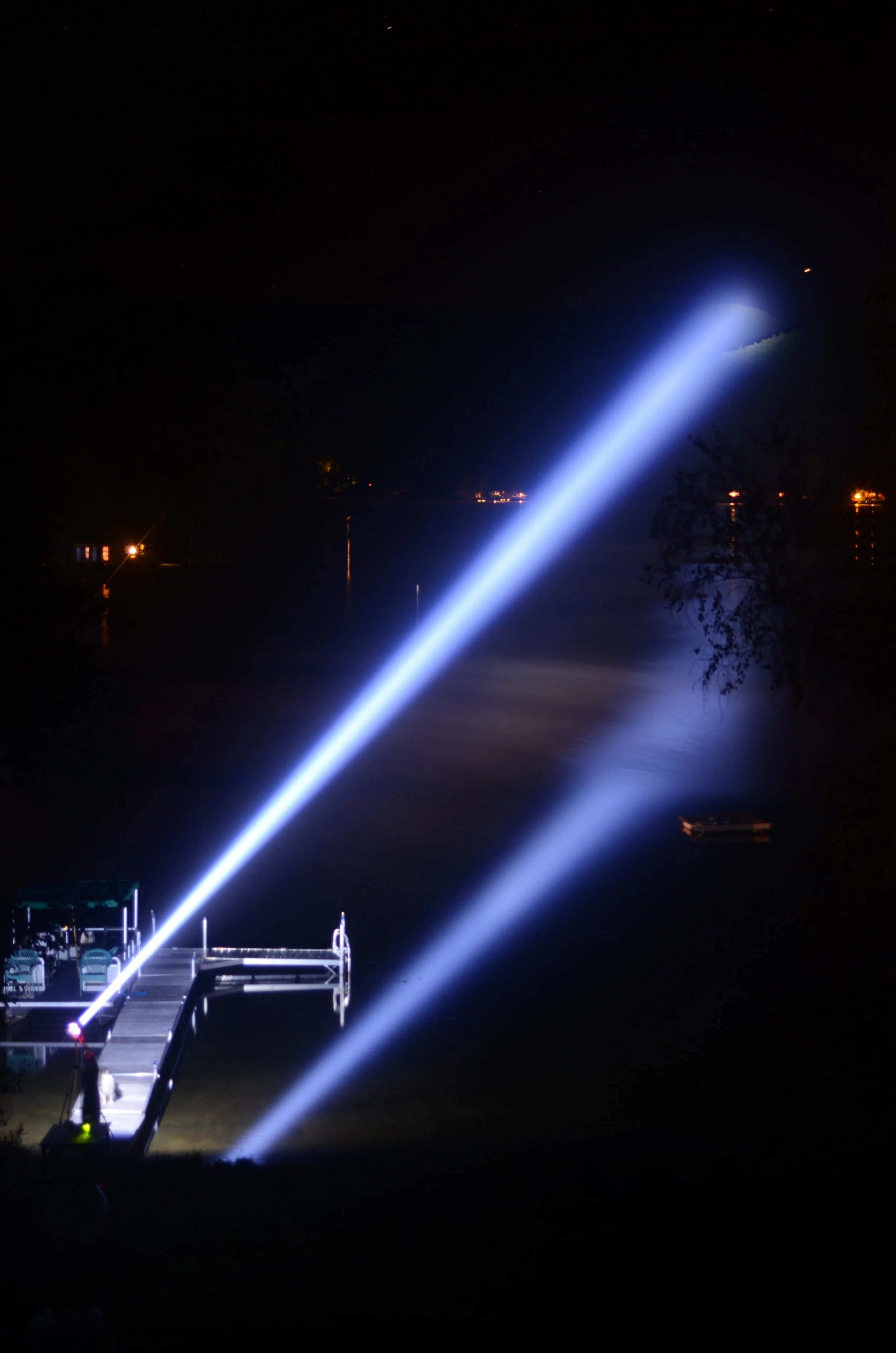Light of Xiuhtecuhtli
Silent Thunder Ordnance
Scale can be a difficult thing to comprehend and convey. Numbers, sizes, and distances beyond a certain point start becoming intangible. Can you really picture in your head what precisely ten miles or a million of something looks like? Probably not, it is just too big to wrap your head around in most cases. So by example, we try to make scale relatable. (more on units/scale at the bottom)*
The Lance of Ra is the most powerful LED thrower ever produced. At almost 3 million candela, it is good for 2 miles of ANSI throw. That is a lot, and in an attempt to demonstrate that we did some photography showing it illuminating a spot on a mountainside 1.61 miles away, paired of course with a satellite image giving a sense of the distance.
But in that Lance photo there is another mountain ridge, just to the left of the one targeted. That ridge is part of a much MUCH larger mountain, which happens to be 4.27 miles away. Once again, for scale and measurement, we have a satellite image.
If you hadn't guessed by now, we're going to illuminate that mountain. We even have enough power in the wash to illuminate the "near" mountain which is "only" 1.6 miles away.
Welcome to the Light of Xiuhtecuhtli, named for the Aztec god of fire. With >50 million candela and >6000 lumens on tap, it is aptly named. This gives the LoX the power to reach out and touch targets 9 miles away (ANSI throw). It is a really unbelievable amount of performance, easily illuminating almost all clouds for example. Finding a place to really stretch its legs, and an evening clear enough to photograph it, was challenging. Ten mile visibility, the meteorological maximum air clarity standard, doesn't exactly occur between mountaintops nightly.
What else is out there which compares to the LoX you might be asking? Not much actually, the LoX may be the most powerful flashlight ever made. (flashlight being defined as a hand held light source) The current most powerful common thrower is the BLF Giga Thrower. A very popular light, the BLF GT spits out about 1 million candela give or take and about 2000 lumens. The very similar Astrolux MF04 does a little better at about 1.3 million candela, again give or take. The Maxabeam is also eclipsed several fold, which is a mere 12 million candela. The closest light in performance is the 52 million candela Maxablaster, which has about the same throw but at a fraction the lumens.
So where does the LoX stand? Right now it is a functional mule, a working test-bed for the optical and electronic architecture of the flashlight. This is why the numbers are all nicely rounded, this design is a long way from production, more performance may well be found if development is continued. Depending on customer response we may build this out into a complete product.
*Candela is lux (light intensity) relative to distance, as lux obviously will vary wildly with distance. While for technical reasons it generally shouldn't be measured at 1 meter, as it produces inaccurate results, 1 candela is defined as 1 lux at 1 meter. ANSI throw is a standard for converting candela into beam distance, essentially a level playing field for comparing how far a light will project a beam.



